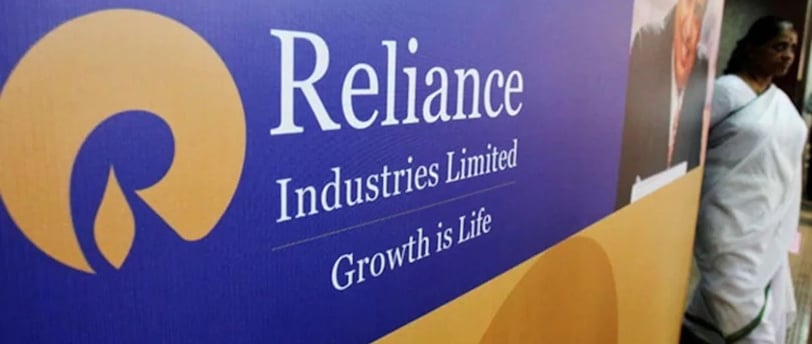Add your promotional text...
Reliance Industries in 2024: A Year of Struggles and Opportunities Ahead
Synopsis: Reliance Industries Limited (RIL) is set to close 2024 with negative returns, marking a rare departure from its decade-long growth streak. Plagued by declining share prices, weaker performance in key sectors, and market uncertainties, the company faces challenges in rekindling investor confidence. However, its robust portfolio and long-term strategies could offer a path to recovery.
ANALYSIS AND OPINION
By Vikas Purohit
12/17/20243 min read


Reliance Industries: A Challenging Year
For Reliance Industries Limited (RIL), 2024 has been a year of contrasts. From a record high of ₹2,856.15 in July, the stock has slumped by 22.5%, wiping out ₹4.4 lakh crore from its market capitalization. This marks the first year of negative returns for RIL in almost a decade, a sharp departure from the steady growth it has enjoyed in the past.
Key Stock Metrics
Current Share Price: ₹1,245.50
Market Cap: ₹16.89 lakh crore
6-Month Decline: 15.68% (₹232.23)
5-Day Decline: 3.07% (₹39.60)
What’s Behind RIL’s Struggles?
The conglomerate’s challenges stem from multiple factors affecting its diverse business verticals:
1. Petrochemicals and Oil & Gas
RIL’s core petrochemical and energy businesses have been hit by weak global demand, leading to pressure on refining margins. The sluggish macroeconomic environment has further compounded the issue, with little immediate relief in sight.
2. Reliance Jio’s Slower Growth
While Reliance Jio remains the market leader in India’s telecom sector, growth in average revenue per user (ARPU) has been slower than expected. Additionally, emerging competition in satellite broadband, notably from Elon Musk’s Starlink, poses a potential threat.
3. Reliance Retail’s Challenges
Once a star performer, Reliance Retail has faced headwinds in 2024 due to:
Weak consumer demand, particularly in fashion.
Rising competition from quick-commerce players like Zepto and Blinkit.
Operational inefficiencies leading to the closure of 1,185 underperforming stores.
4. New Energy Ventures and Debt Pressure
RIL’s aggressive investments in new energy projects have yet to yield significant returns. These capital-intensive initiatives have forced the company to take on additional debt, adding to financial pressures.
5. AGM Disappointment
The 2024 Annual General Meeting (AGM) in August failed to inspire investors. While the company announced a 1:1 bonus issue, it fell short of addressing concerns about monetization timelines for Reliance Retail and Jio Platforms.
The Impact on Mukesh Ambani’s Wealth
As RIL’s stock has struggled, Mukesh Ambani’s net worth has also taken a hit.
July 2024: $120.8 billion
December 2024: $96.7 billion (Source: Bloomberg)
Reliance Retail: A Year of Consolidation
Despite its challenges, analysts remain cautiously optimistic about Reliance Retail’s long-term potential.
Performance Highlights
Weak demand in fashion and competition from quick commerce dented revenue growth.
Operational inefficiencies led to the closure of underperforming outlets.
October results showed signs of improvement, though full recovery may take two more quarters, according to Jefferies.
Valuation Insights
Jefferies estimates the retail business’s valuation at $57 billion, noting that this is relatively conservative compared to competitors like DMart. The potential for growth in this segment remains significant, especially if consumer demand rebounds.
Reliance Jio: Maintaining Leadership Amid Challenges
Reliance Jio continues to dominate India’s telecom sector but faces challenges in maintaining its growth momentum.
Key Developments
ARPU Growth: Slower-than-expected increase.
Competition: Threats from emerging players like Starlink in satellite broadband.
Upcoming IPOs
Both Reliance Jio and Reliance Retail are eyeing IPOs, which could unlock substantial value.
Jio IPO Target: 2025 (Estimated valuation: $100 billion)
Retail IPO: Expected after 2025, pending internal restructuring.
What Analysts Say About RIL’s Recovery
Jefferies
Rating: Buy
Target Price: ₹1,700 (Implying a 32% upside from the current price).
Expects refining margins to improve by 2025, driven by favorable demand-supply dynamics.
Highlights Jio’s potential in 5G monetization and broadband growth.
JPMorgan
Notes RIL’s attractive valuation relative to peers.
Emphasizes the need for improved margins in core businesses to drive recovery.
WealthMills Securities
Acknowledges current challenges but highlights RIL’s diversified portfolio in energy, retail, and digital services.
Lessons from History: RIL’s Resilience
RIL has a history of bouncing back after periods of underperformance.
Five-Year Performance: Stock has gained 60.53% over the last five years.
Free Cash Flow (FCF): Analysts believe positive FCF generation and disciplined debt management will aid recovery.
Net Debt-to-EBITDA: Commitment to keeping this ratio below 1x is a reassuring sign for investors.
What Lies Ahead for RIL?
Short-Term Challenges
Continued pressure on refining margins and retail performance.
Uncertain timelines for IPOs of Jio and Retail segments.
Intense competition in key markets.
Long-Term Opportunities
Digital Dominance: Reliance Jio’s partnerships, like the one with Nvidia for AI infrastructure, position it as a leader in India’s digital transformation.
Green Energy: Investments in renewable energy projects, while slow to materialize, could deliver significant returns in the future.
Retail Expansion: As consumer demand improves, Reliance Retail is poised for growth, supported by its extensive reach and scale.
In conclusion, 2024 has been a challenging year for Reliance Industries, marked by declining share prices, weaker performance across key sectors, and investor concerns. However, the company’s diversified portfolio and strategic initiatives provide a foundation for recovery.
With robust plans for its digital, retail, and energy businesses, coupled with a disciplined approach to managing debt and investments, RIL has the potential to emerge stronger in the coming years. Investors, however, will need to exercise patience as the conglomerate navigates its way through current headwinds.
Disclaimer:
This article is for informational purposes only and does not constitute investment advice. Always consult a financial advisor before making investment decisions.
